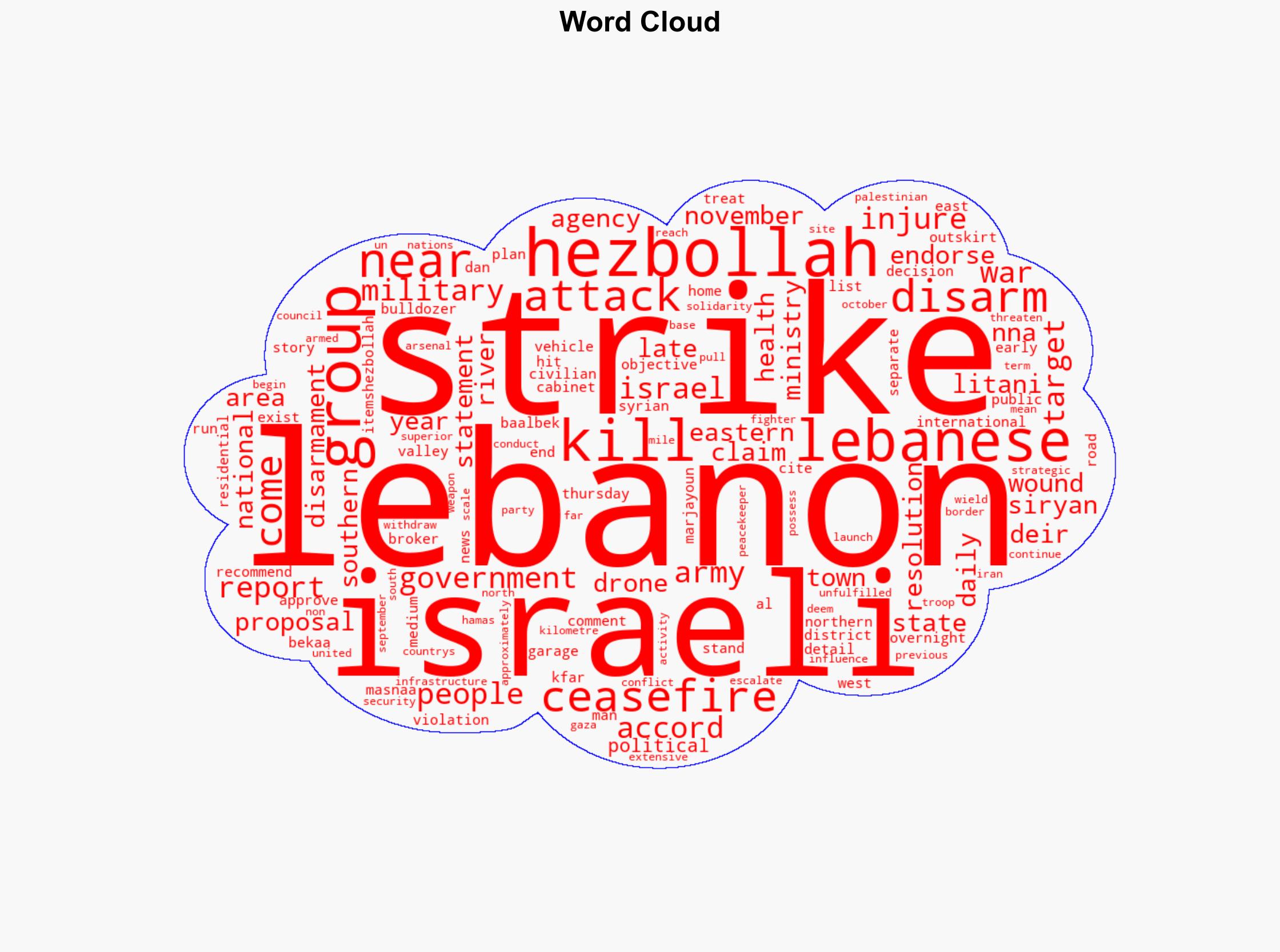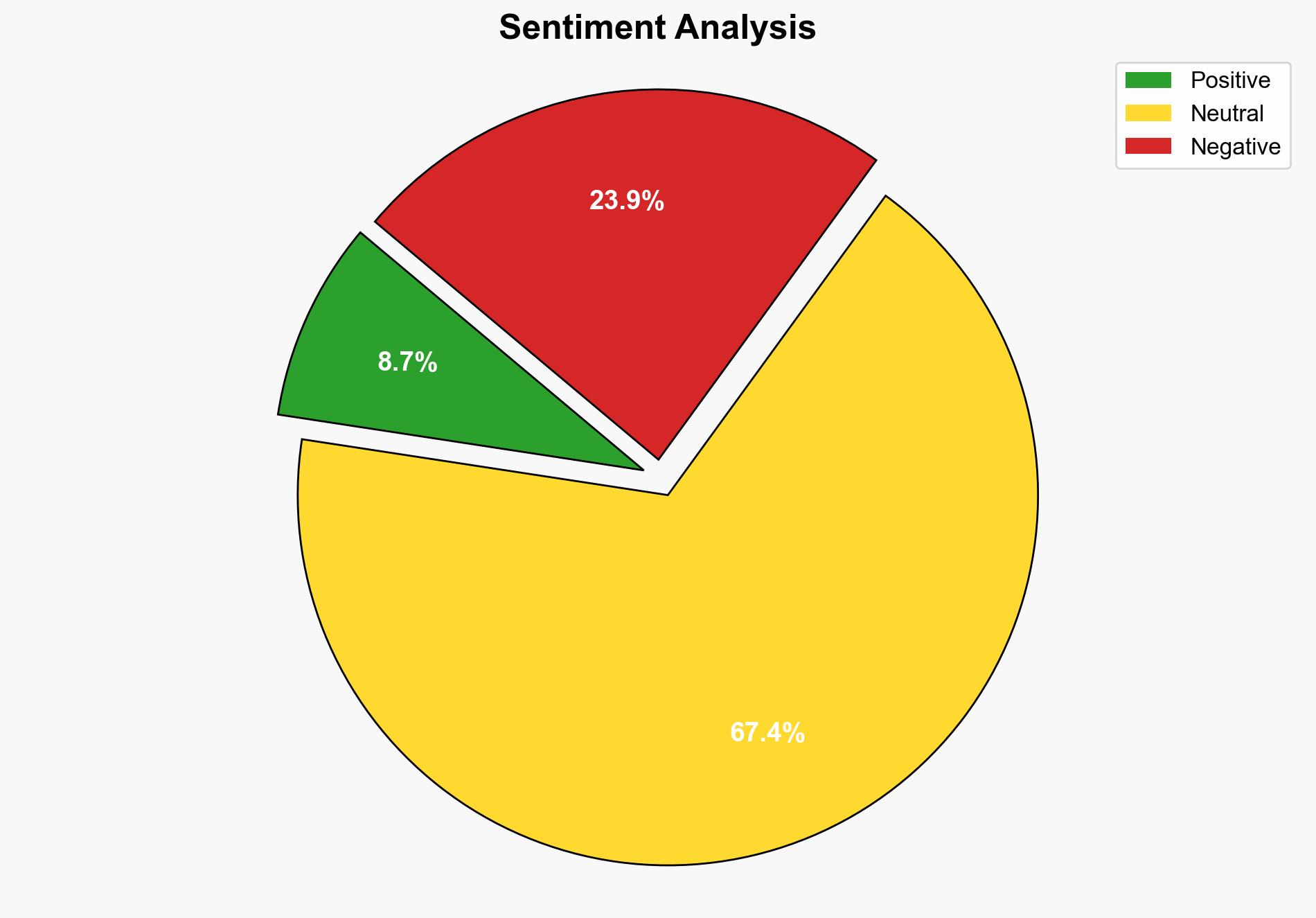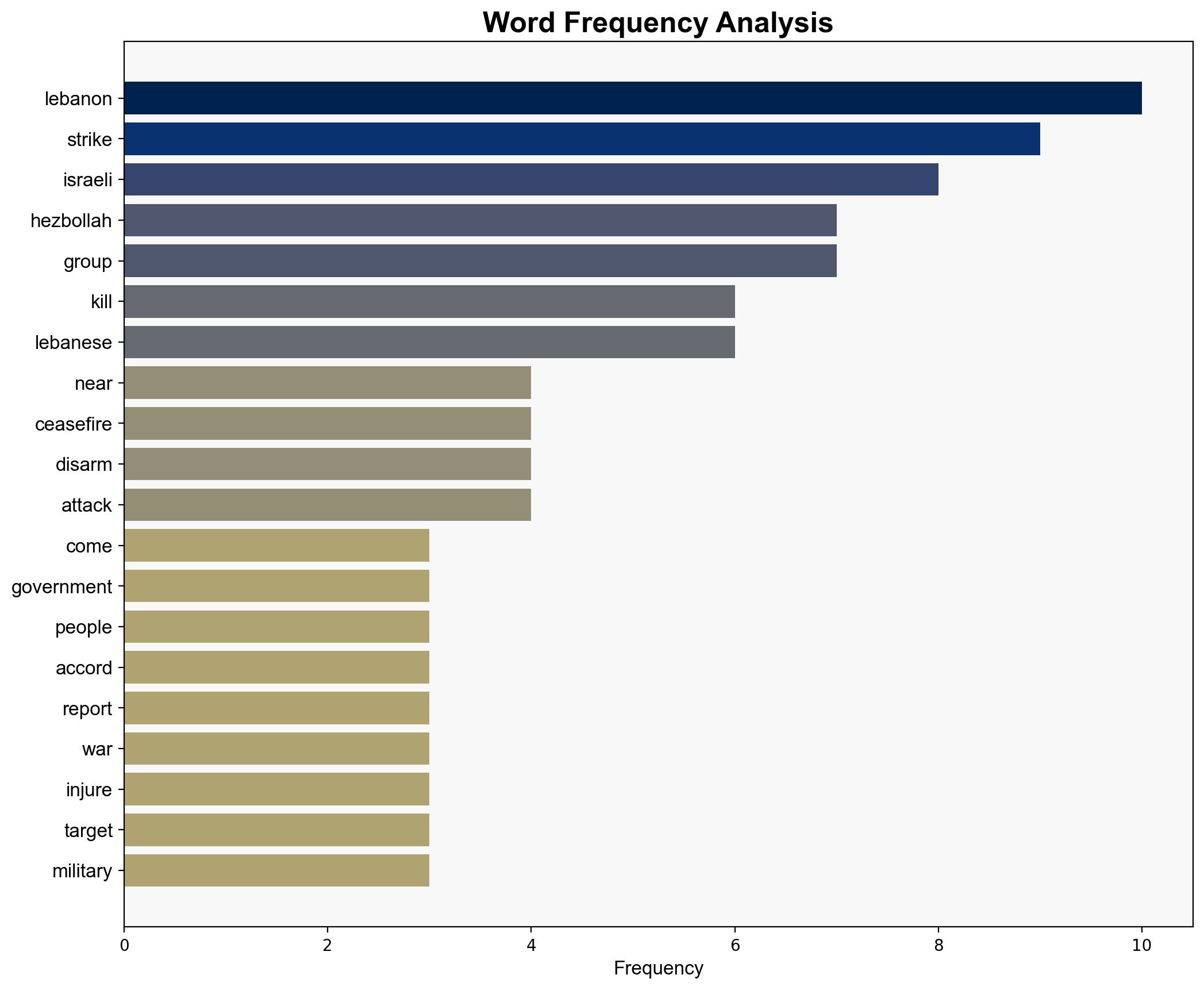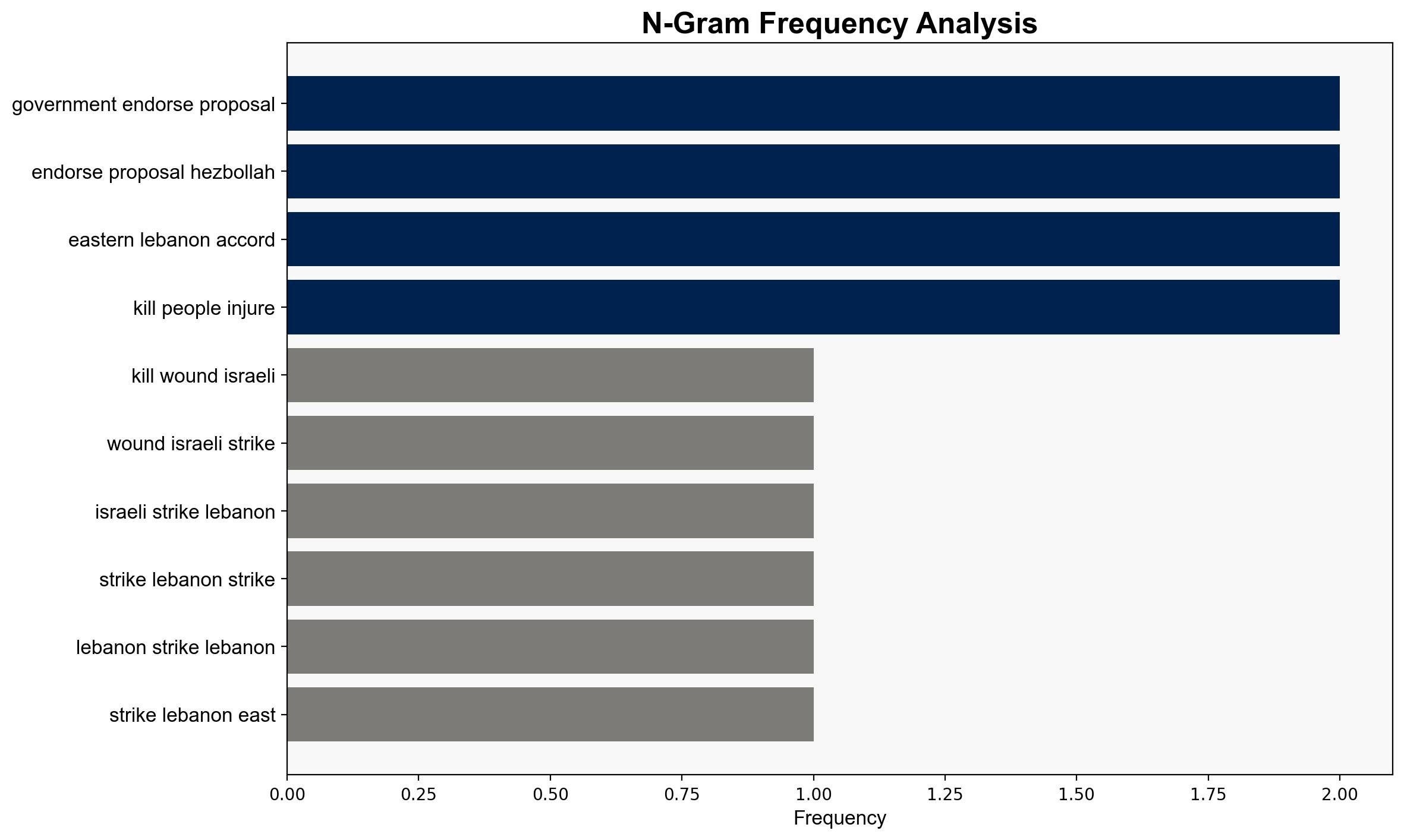At least six killed 10 wounded in Israeli strikes on Lebanon – Al Jazeera English
Published on: 2025-08-07
Intelligence Report: At least six killed 10 wounded in Israeli strikes on Lebanon – Al Jazeera English
1. BLUF (Bottom Line Up Front)
The most supported hypothesis is that the recent Israeli strikes on Lebanon are a strategic move to pressure Hezbollah into disarmament, leveraging the Lebanese government’s recent endorsement of a disarmament proposal. Confidence level is moderate due to the complexity of regional dynamics and potential information gaps. Recommended action includes diplomatic engagement to de-escalate tensions and support for UN peacekeeping efforts to monitor compliance with ceasefire agreements.
2. Competing Hypotheses
1. **Hypothesis A**: The Israeli strikes are primarily aimed at degrading Hezbollah’s military capabilities and infrastructure, in response to perceived threats and recent Hezbollah activities in solidarity with Hamas.
2. **Hypothesis B**: The strikes are a calculated effort by Israel to influence Lebanese political dynamics, specifically to bolster the Lebanese government’s recent proposal for Hezbollah’s disarmament by demonstrating the costs of continued militarization.
Using ACH 2.0, Hypothesis B is better supported by the timing of the strikes coinciding with the Lebanese government’s disarmament proposal and the strategic targeting of Hezbollah infrastructure.
3. Key Assumptions and Red Flags
– **Assumptions**: It is assumed that the Lebanese government’s proposal for Hezbollah’s disarmament is genuine and not merely symbolic. It is also assumed that Israel’s military actions are directly linked to political objectives rather than purely defensive measures.
– **Red Flags**: The lack of a direct statement from the Israeli military on the strikes raises questions about their strategic intent. Additionally, the potential for Hezbollah to retaliate could escalate the situation further.
4. Implications and Strategic Risks
The continuation of Israeli strikes could lead to a broader conflict involving regional actors, potentially destabilizing Lebanon further. Economic impacts could arise from increased military activity, affecting regional trade routes. Geopolitically, this could strain Israel’s relations with other Middle Eastern countries and complicate international diplomatic efforts.
5. Recommendations and Outlook
- Engage in diplomatic efforts to encourage dialogue between Israel and Lebanon, focusing on de-escalation and compliance with UN resolutions.
- Support UN peacekeeping missions to ensure adherence to ceasefire agreements and monitor potential violations.
- Scenario Projections:
- **Best Case**: Successful diplomatic intervention leads to a renewed ceasefire and progress on Hezbollah’s disarmament.
- **Worst Case**: Escalation into a broader regional conflict involving multiple state and non-state actors.
- **Most Likely**: Continued low-intensity conflict with periodic escalations, maintaining regional instability.
6. Key Individuals and Entities
– Hezbollah
– Israeli Military
– Lebanese Government
– UN Peacekeeping Forces
7. Thematic Tags
national security threats, regional focus, counter-terrorism, geopolitical dynamics





